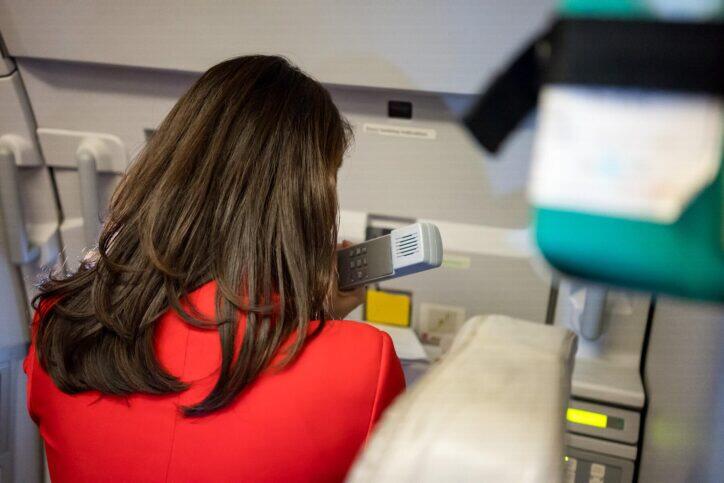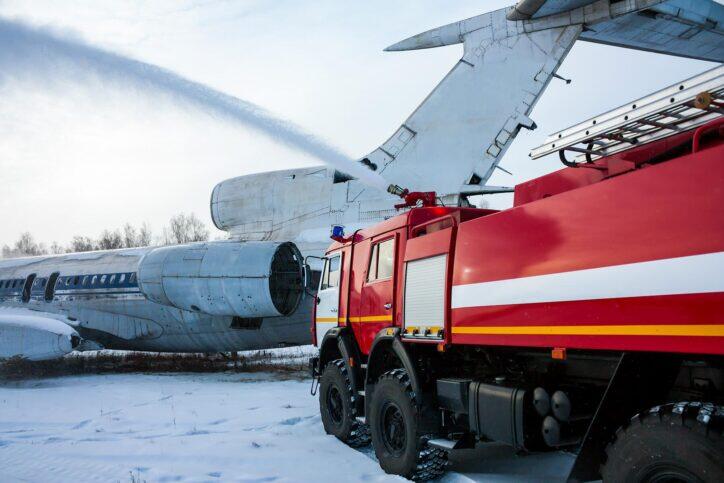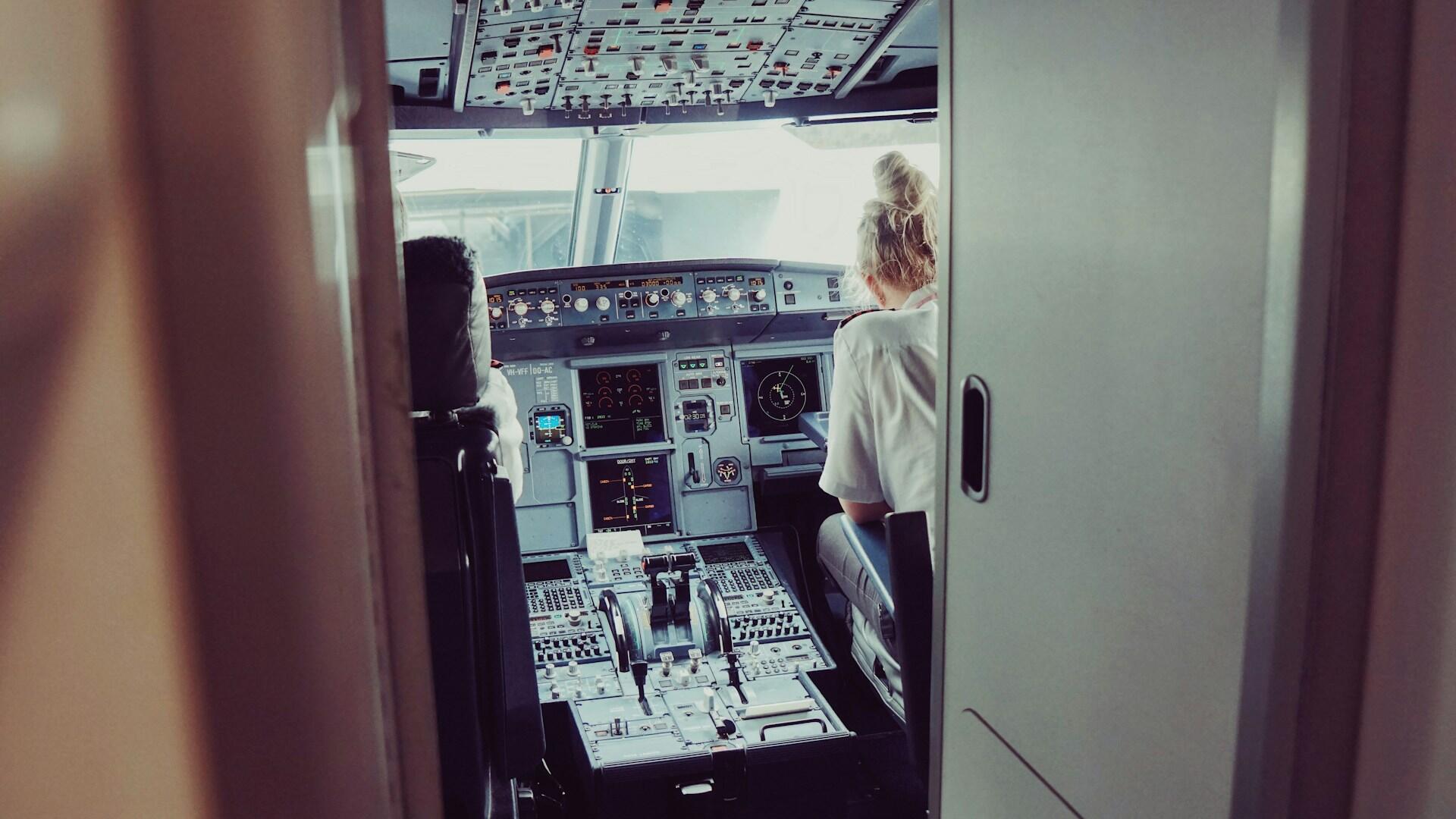FYI: It’s nothing like it is in the movies.
Admittedly, I was a bit bleary when it happened. The night before, I’d been a bridesmaid at a dear friend’s wedding. My husband flew in from a work assignment to meet me for the reception, a magical, whirlwind night. We were headed out on separate flights from New Orleans the next morning: he had to go back to his job in Florida, and I was returning home.
I’d carefully packed my gown and wrapped my beautiful bouquet, which I planned to give to my mom as a small token of thanks for babysitting our then-toddler son. My husband and I drove together to the airport, said goodbye, and headed to our respective gates.
When the call came to board, I crammed myself and my luggage into the tiny commuter jet, which had a 1-2 seat layout and overhead storage bins on the right side only. The other passengers did the same.
Then we all sat—and sat some more without leaving the gate. Eventually, the pilot announced there was a mechanical issue. We needed to take our belongings, deplane, and wait at the gate for more information. As time passed, I began to worry. I needed to get home to my kid, I had to work the next day, and I was anxious that the flight would be canceled. Looking back, I wish it would have been.
Recommended Fodor’s Video

“Ladies and Gentlemen…”
After another hour, word came that the issue was fixed. With a sense of both relief and déjà vu, I got back on the plane with my fellow passengers. The lone flight attendant ran through the safety presentation, which I’ll admit I didn’t pay much attention to. We then taxied down the runway and took off. All standard operating procedure stuff. About 45 minutes later, I’d just nodded off when another, more urgent intercom announcement woke me.
“Ladies and gentlemen, this is your pilot. I’m declaring a state of emergency.”
My eyes flew open, my stomach dropped, and I strained to hear more through the buzzing that began in my ears. A sensor indicated a fire in the cargo hold; the pilot needed to bring the plane down immediately, likely in Memphis, if we made it there. He instructed us to listen to our flight attendant for emergency landing directions, and the intercom went silent.
I felt the plane lurch. And that’s when it got real in the cabin. One woman screamed that her dog was in the cargo hold. Another woman started praying the rosary loudly. Some passengers began to sob, and others grabbed each other’s hands. My mind immediately went to my husband and small son. I flipped my cell phone out of airplane mode, sending a single text: My plan is making an emergency landing. I love you. I think it’s going to be ok.
I was terrified but didn’t panic. My life didn’t flash before my eyes, either. I settled into a strange sort of tunnel vision, took a deep breath, and looked down. The wedding flowers sat near my feet, gorgeous and unbothered. I marveled at the absurdity of the moment. I mused about the plane’s earlier maintenance call—had the issue really been fixed?
I wondered what my son was doing. If he’d had fun with my mom. If I’d ever see him again. My phone buzzed. A text from my husband, who’d already landed in Florida. It read: Oh my God. I love you, too.
Miraculously, we were able to message back and forth a bit more; I let him know what was going on as best I could. Then I realized I’d better listen to the flight attendant, who was barking orders at us.
BRACE!
In this new (but definitely not improved) version of the safety presentation, we were instructed to “assume the position” before landing: feet flat on the floor, torsos folded forward, and heads resting on the seat in front of us.
This was nothing like you see on TV or in the movies. We never lost pressure, so no oxygen masks fell. While descending fast, the plane wasn’t shaking or moving violently. Despite the initial outburst, an eerie calm settled over the cabin. There was still muffled crying, but we all seemed to transition into a heightened sense of alertness, focused on what might happen next and how we’d collectively respond.
I heard and felt the landing gear descend. The pilot announced we were approaching the Memphis airport and landing shortly. The flight attendant, now seated in the jump seat at the front of the plane, screamed at us all to get into position and then repeatedly shrieked, “BRACE! BRACE! BRACE!”
I squeezed my eyes shut, laced my hands behind my neck, and finally, blessedly, felt the plane’s wheels hit the ground with a jolt—hard but not enough to hurt. The plane skidded to a halt. I snapped up and looked out the window. Was the plane on fire? Should I rush to the nearest emergency exit? Were we hopping on an inflatable slide?

The jet was immediately surrounded by fire trucks. Firefighters began to circle and inspect; our flight attendant told us to stay seated. After what seemed like an eternity, the pilot (whose voice I’d become quite familiar with by this point) informed us it had been a false alarm, the plane was fine, and we were proceeding to a gate.
There was applause, cheering, and shouting (Thank God! Praise Jesus! Hallelujah!). I exhaled and called my husband to let him know I was safe. It was only after I hung up that I finally cried.
The Long Road Home
The adventure didn’t end with our traumatic landing in Memphis. As all the passengers deplaned–dazed, confused, and having feared for our lives just moments before–we realized there was no plan for our arrival. Gate agents informed us two other flights had to get off the ground before we’d get assistance. I guess I expected a warmer welcome, considering what we’d just been through.
Most passengers were rebooked, but there was no way I could get back on a plane. Instead, I rented a car and drove the rest of the way home. I also made it clear to the airline—in no uncertain terms—that it would reimburse me the cost, which eventually happened. Four hours later, I got to my mom’s, threw my arms around my son, and didn’t let go for a long time.
If It Happens to You…
I wish I could tell you that my experience was a rare event, but when I reached out to the Federal Aviation Administration to confirm that hunch, I got an interesting response. I asked the agency how many commercial flights made emergency landings in the last year in the U.S. The FAA confirmed it investigates each instance but doesn’t keep a database and has no numbers to share.
Curious, but one fact’s crystal clear: “Flying is still the safest mode of transportation out there,” Anthony Brickhouse, associate professor of aerospace safety at Embry‑Riddle Aeronautical University, told me. “You’re literally safer at 38-thousand feet in that aircraft than you were on the escalator that you took to get to your terminal gate.”
Brickhouse says if something does go awry in-flight, it’s crucial to stay calm and trust your crew. They train for all sorts of emergencies and know exactly what to do.
“Try not to freak out and let the professionals do their jobs,” said Brickhouse.
I didn’t let this incident stop my travels. I’ve literally been around the world since and wouldn’t trade those adventures for anything. To get back in the air, I used mindfulness, meditation, and breathing techniques if I started to feel anxious. I still do, if necessary.
But sometimes emotion and perhaps a touch of PTSD can override logic and even the best of odds. I’d be lying if I said commuter jets don’t make me a little nervous to this day, even though data dictates I’m infinitely more secure in one of them than in my own car. Or on an escalator.




